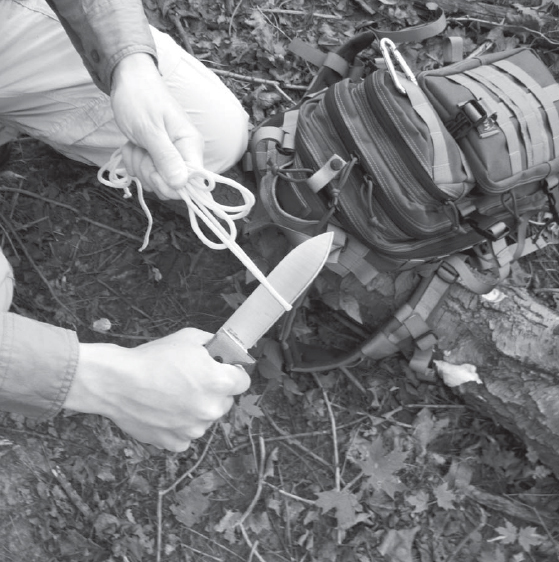
Your survival knife is without question one of the top three most important items in your bug-out bag. An ignition device and a metal container are the other top two.
For many, choosing a survival knife is a very personal decision. With thousands of knives in the marketplace, the choices can be somewhat overwhelming. But remember that the best survival knife is the one that meets your individual needs.
Don’t be fooled by what you see in the movies. The fancy knives seen in survival movies are more for prop collectors than for real survivalists. You don’t know how much you need a good, sharp cutting tool in a survival situation until you don’t have one.
I learned this firsthand on a three-day survival trip in which I was not able to bring a modern knife. I will never take my knife for granted again.
Best Survival Knife: What it Should Do
By design, a survival knife should be fairly simple. It should be about function not “flash.” Below is a short list of tasks a survival knife should be able to assist you with:
- Cutting
- Hunting
- Dressing game
- Hammering shelter anchors
- Digging
- Self-defense
- Splitting/chopping
- Making fire
- Carving
- Signal mirror (if blade is polished steel)
- Building shelter
- Food preparation
Best Survival Knife Features: Fixed Blade
The best survival knife in my opinion should have a fixed blade – not a folding or lockback style.
True, folding knives can be more convenient to carry, but strength is compromised at the folding joint. If the knife breaks during rigorous use, you are SOL.
If you really like folding knives, carry one as a backup, but not as your primary survival knife. I carry a Spyderco Native locking folder as my everyday carry knife and it will be my bug-out bag backup knife as well.
Best Survival Knife Features: Full Tang
The phrase “full tang” means the metal knife blade and handle are made from one solid piece of metal. The metal handle is then sandwiched with knife scales to form a grip.
The alternative to a full tang is a rat tail tang. A rat tail tang is much smaller and narrow.
A full tang blade is much more robust and stable. It can withstand incredible abuse from demanding tasks, such as splitting wood (often called “batoning” in the survival community).
Best Survival Knife Features: Sharp
Your survival knife should be razor sharp. It should shave the hair off your forearm. If it doesn’t, buy a whet stone and hone the blade until it does.
You should take pride in your knife’s razor edge. A dull knife is more difficult and cumbersome to use effectively. It requires more effort and pressure to perform tasks, which leads to erratic carving and cutting.
A sharp knife is actually safer to use and is a more precise cutting tool that requires less energy and time as compared to using a dull knife.
Best Survival Knife Features: Size Does Matter
As a rough estimate, the overall length of your knife should be in between 7″ and 11″. A knife that is much larger that 11″ isn’t practical for delicate and detailed tasks.
However, a knife smaller than 7″ is less capable of performing tasks that require a larger blade, especially demanding jobs.
Best Survival Knife Features: Pointed Blade/Single Edge
Your knife needs to have a pointed blade tip. The point comes in handy for all kinds of chores.
I broke the point off of my favorite survival knife and it drastically impacted the knife’s effectiveness as a useful tool. I eventually had to replace it.
Also, the knife blade should not be double-sided. Choose a single-edged blade only. You won’t have a need for two sharp edges. The flat back ridge of a knife blade can actually serve several functions.
Below are some of the most common:
- Striking a fire steel
- Used as a stabilizing platform for thumb or hand
- Pounding surface while splitting or “batoning” wood
What's the Best Survival Knife for You?
Those are just a few of the features that I think make for the best survival knife. What about you? Leave a comment below and share the survival knives you've used.


![Best Concealed Carry Guns In 2025 [Field Tested] Wilson Combat EDC X9S 1](https://gundigest.com/wp-content/uploads/Wilson-Combat-EDC-X9S-1-324x160.jpg)


![Best 9mm Carbine: Affordable PCCs [Tested] Ruger Carbine Shooting](https://gundigest.com/wp-content/uploads/Ruger-Carbine-Shooting-100x70.jpg)
![Best AR-15: Top Options Available Today [Field Tested] Harrington and Richardson PSA XM177E2 feature](https://gundigest.com/wp-content/uploads/Harrington-and-Richardson-PSA-XM177E2-feature-100x70.jpg)
